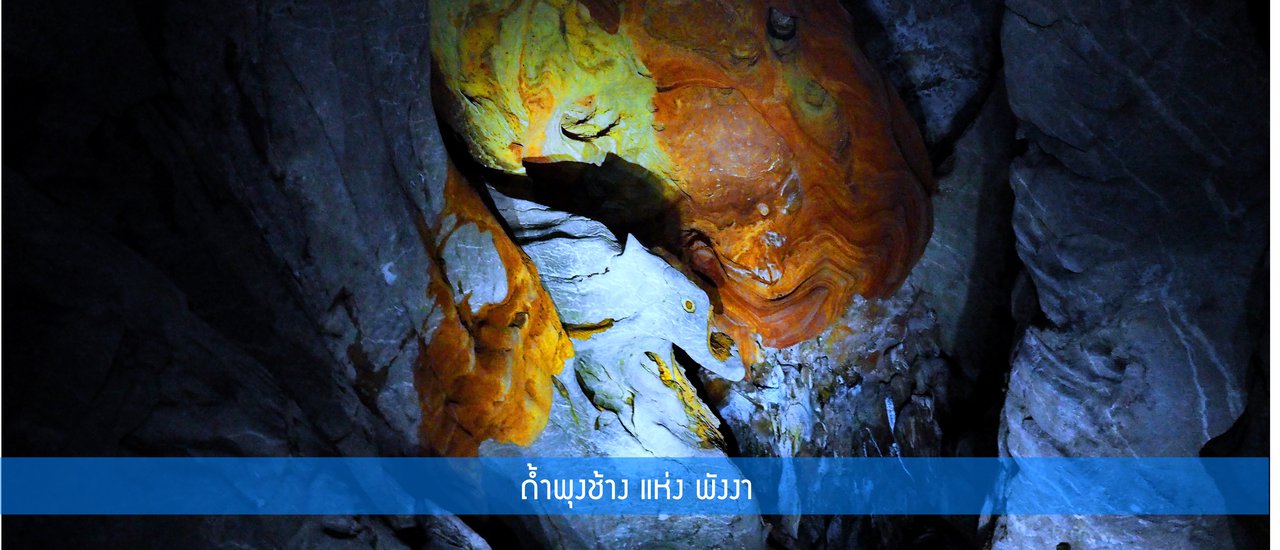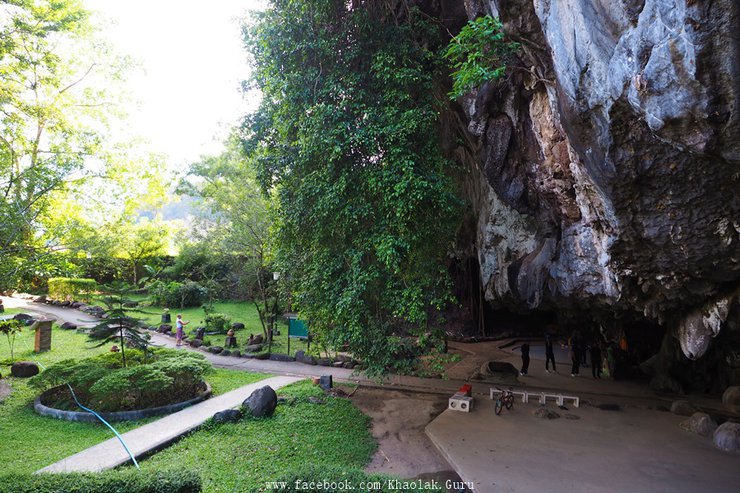" Phung Chang Cave"
Beliefs, Legends, Science, History, and Imagination
Which still remains in the cave full of wonder of tourists who walk in here, one after another.
(For those who want to read the legend, you can listen to them tell it at Phung Chang Cave Legend )
Why don't we see many reviews of Phung Chang Cave? ???
Because the concessionaire of Phung Chang Cave does not allow any photos or videos to be taken inside the cave.
Why is it forbidden? ???
Because the cave contains beautiful stalactites and stalagmites, which are at risk of growth when exposed to heat.
As well as the habitat of the world's smallest bat, Kitti's bat, which may be affected by various lights.
Why is there this review? ???
The reviewer received an opportunity from the TAT of Phang Nga Province to help promote tourist attractions in Phang Nga Province.
And the trust of the concessionaire as a fellow Phang Nga resident to take pictures under several conditions.
For example, do not use flash photography, do not use flashlights or equipment that generates heat.
In the end, I was only able to bring a small camera without a flash.
And use the flashlight of the caretaker with strict supervision.
Therefore, the pictures obtained "may be clear or not clear, I apologize."
-----------------------------------------------------------------------------------------------------------------------------------
Phung Chang Cave
Located in the city center of Phang Nga Province, it is not difficult to find. If you see the large "Elephant Mountain" in the middle of the city.
The middle of Elephant Mountain is "Phung Chang Cave", and the cave is located in the area of Wat Phra Phas Prachim Khet.

The front of the cave is a wide cliff with shady trees.
It has been landscaped as a place for relaxation for city dwellers and tourists.

The cave area is clean and tidy, whether you come in to sit and relax or to pay respects to Father Ta Khao Chang, it is visually pleasing.

Located in front of the entrance to Phung Chang Cave is the "Shrine of Father-in-law Khao Chang," a revered site of worship for the people of Phang Nga for many years.

Both Khao Chang and Tham Phung Chang are believed by the people of Phang Nga to be sacred places associated with the city of Phang Nga.

In the past, I remember being able to walk through the cave to the other side as a child.
However, the tour concessionaire no longer allows this due to safety concerns and the considerable distance involved.
As a result, visitors can only go a certain distance before returning through the same cave entrance.
The total time for the tour is approximately 1 hour and 30 minutes.
Let's take a closer look at the details:
- Distance: The guided cave tour covers a distance of 1.2 kilometers.
- Sections: The tour is divided into three sections:
- First section: This section involves exploring the cave by canoe. The water level is deep, and paddling is provided.
- Second section: This section involves traveling on a bamboo raft. The water level is approximately knee-deep to waist-deep.
- Third section: This section features shallow water, allowing for walking.

Canoes are parked and ready in front of the cave, where a small weir dams the water.
We will each receive a small flashlight to illuminate the beauty of this cave.
^_^
Let's go!


During the initial stage of the canoe ride, capturing images proved impossible due to the enveloping darkness.
Upon reaching the cave's interior, we encountered fruit bats hanging upside down on the walls.
Notably, the absence of bat droppings distinguished this cave from others. This peculiarity can be attributed to the continuous water flow and良好的 ventilation within the Phung Chang Cave, ensuring a breathable atmosphere.

The photos taken in the dimly lit cave are blurry, but the actual scenery is breathtaking.

While the canoe slowed down, we managed to capture some images, albeit blurry, due to the challenges of photographing in low light conditions. Additionally, the constant movement of the boat and the guide's ongoing explanations of various points of interest and peculiarly shaped rocks, particularly those resembling elephants, made capturing clear images difficult.

To capture clear images, we had to switch from a canoe to a bamboo raft at the designated point.

A large stalagmite resembling a pagoda with small elephants walking in circles on top of each other, estimated to be about 2-3 meters tall.
Elephant Stupa Rock


The next path is a medium-depth water level that we have to take a bamboo raft into, with the younger students helping to pull us along.

The final stage of our descent into the cave was marked by the opportunity to capture photographs of the bumblebee bat, the world's smallest bat species. These solitary creatures, inhabiting individual territories, are roughly half the size of a human fist.

A white stalagmite resembling a crane (does it?)

The Phung Chang Cave was once a cave under the sea.
The evidence is the fossils of sea anemones and seashells embedded in granite, which was formed from cooled magma.

The air inside the Phung Chang Cave is remarkably fresh and breathable, devoid of any unpleasant odors. This is attributed to the presence of a crystal-clear stream that flows through the cave, providing an abundance of oxygen. Additionally, the cave's former existence as a submerged sea cave suggests the presence of a significant amount of salt minerals, contributing to the refreshing sensation akin to being by the sea (without the scent of seawater).

The granite's pattern resembles a natural painting with lines,
like a woman fishing with a fish bucket beside her. (Can you see it? Haha)

The guide points out the various stalactites and stalagmites, each with its unique characteristics.

Some stalactites are large, red, and have a shimmering appearance due to the presence of minerals such as glass or silica. (The image is unclear again = =" )

Billion-year-old stalactite
This stalactite is the largest in Thailand.
And it continues to grow larger every year.
It is also translucent when light is shone through it.
*** Normally, stalactites grow 1 millimeter every 10-30 years and stop growing immediately when touched.
Therefore, do not touch it under any circumstances.***

A massive limestone boulder, fused with other minerals, has formed a shape that eerily resembles a giant fish, seemingly alive within the cave. We couldn't identify the species of the fish, haha!

At the end of the path, there is a stalagmite. The tour guide said that
this is the "Golden Throne".
The Golden Throne is a red stalagmite that sparkles with the light of the silica glass embedded within it.
The top has been eroded by water dripping from the cave wall, forming a basin-like shape.

The Golden Throne stalagmite is actually covered in a multitude of shimmering crystals, but my photos don't do them justice.

The highlight of the Phung Chang Cave is the white elephant with a red umbrella, its eyes gleaming as it stares at us.

A white granite pattern chipped off to reveal a red graphite eye.
It fits perfectly, as if this elephant were alive.
Under the yellow, orange, and red stones above, like an umbrella protecting this elephant.
And this is a picture of the wonder of nature, stories, beliefs, and science of the people of Phang Nga.

Phung Chang Cave is a hidden gem of Phang Nga Province, a treasure that has long been associated with this beautiful region.
Discover more about Phang Nga at www.facebook.com/hellophangnga.
Hello Phang-Nga
Tuesday, October 8, 2024 10:26 AM






















